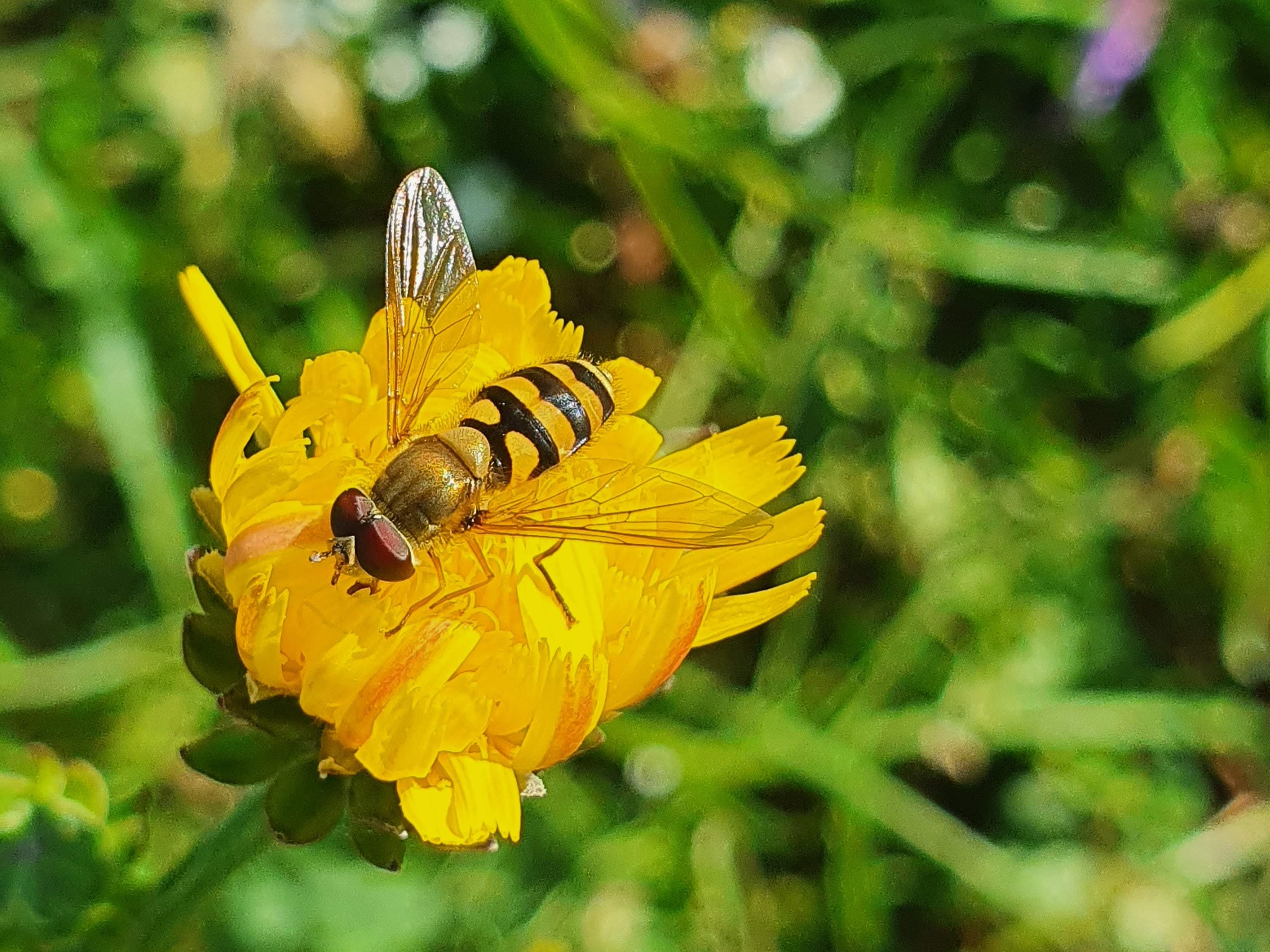The European Red List of Hoverflies, which provides conservation status for European hoverfly species, was published last week. Hoverflies, the family Syrphidae, are abundant, diverse, and surprisingly handsome flies. Many species are bee or wasp mimics. Hoverflies are also the second most important group of pollinators, right after bees. Being second to bees doesn’t mean we could live without them – hoverflies visit a different spectrum of flowers, fly longer distances, and thrive in different climates and habitats than bees, all of which make them irreplaceable.
In the published Red List, 55 scientists and experts estimate that as many as 314 hoverfly species (about 37%) are threatened with extinction in Europe, and an additional 61 species (about 7%) are near threatened. Only slightly above half of all species are considered of least concern (469 species, 52.7%). About 5% of species are data deficient (DD), meaning we lack the data for assessing them.
For hoverfly conservation, it is important to consider the diverse life strategies of hoverfly species, whose larvae live in a wide range of habitats and have varied diets. Adult hoverflies feed on nectar and pollen, but their larvae can be aphid predators, feed on dead organic matter in wet habitats, eat plants, be associated with old trees, or live in an ant nest. One of the reasons why hoverflies are endangered could be the loss of larvae habitats, especially of old trees and wet habitats.
This assessment also answers the “Now what?” question, what to do with this long list of endangered species? In the accompanying document, authors propose grouping endangered species by their natural history and planning specific population recovery activities for each group. The emphasis is on the conservation of old, veteran trees through changes in forest management, protection and restoration of wet habitats, and promotion of sustainable agriculture – activities that will help many other groups of organisms and the environment.
In addition, hoverflies also still need a good amount of PR, as they are not as well-known and popular as bees or butterflies. If you want to learn more about these beautiful and important flies, we recommend the IUCN Hoverfly Specialist Group. And tell one person today – Have you heard about hoverflies?
Source:
Vujić, A., Gilbert, F., Flinn, G., Englefield, E., Ferreira, C.C., Varga, Z., Eggert, F., Woolcock, S., Böhm, M., Mergy, R., Ssymank, A., van Steenis, W., Aracil, A., Földesi, R., Grković, A., Mazanek, L, Nedeljković, Z., Pennards, G.W.A., Pérez, C., Radenković, S., Ricarte, A., Rojo, S., Ståhls, G., van der Ent, L.-J., van Steenis, J., Barkalov, A., Campoy, A., Janković, M., Likov, L., Lillo, I., Mengual, X., Milić, D., Miličić, M., Nielsen, T., Popov, G., Romig, T., Šebić, A., Speight, M., Tot, T., van Eck, A., Veselić, S., Andric, A., Bowles, P., De Groot, M., Marcos-García, M.A., Hadrava, J., Lair, X. , Malidžan, S., Nève, G., Obreht Vidakovic, D., Popov, S., Smit, J.T., Van De Meutter, F., Veličković, N. and Vrba J. (2022). Pollinators on the edge: our European hoverflies. The European Red List of Hoverflies. Brussels, Belgium: European Commission.

